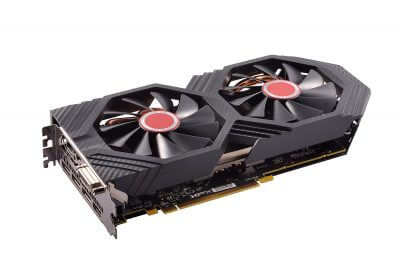It has a hash rate of 18.5 MH/s and a power draw of 185W and is a minor update of the last generation RX 480 cards that were produced. The RX 580 has a 1340 MHz boost clock speed paired with 8GB GDDR5 memory. Its specifications depend on which third-party manufacturer was used and also the amount of RAM.
The small upgrade in speed bring it in close comparison with NVIDIA Geforce GTX 1060, and the cheapest model is at 200 pounds. It has good cooling systems and uses a Polaris architecture which isn’t the popular choice for Ethereum mining. Long considered as the only choice for ETH mining, the RX 400 and 500 series is slowly being put out of use.
Pros
Excellent full HD performance Decent 1440p performance Lower priced cards have great value
Cons
Card lack compatibility
Purpose of mining Ethereum
Most bank customers trust their services because they are known to keep an accurate record of all transactions to prevent fraudulent activity. Blockchains, however, work in slightly different ways.
The entire network verifies and adds transactions to their public ledger, instead of control is in the hands of a sole intermediary. Although the whole purpose for the absence of an intermediary is for trust minimizing, there still needs to be a physical entity that secures all financial records to make sure no one cheats.
Mining is one such innovation that makes decentralized record keeping a legitimate option. Mining keeps track of transaction history while preventing fraud.
How does ethereum mining work?
The consensus is reached by selecting a block of the highest level of difficulty. Miners produce blocks which the others check for validity. A block is considered to be valid only is it contains Proof of Work (PoW). But Ethereum 1.1 is likely to be replaced with Proof of Stake model.
Miners engage in a quiz by trying to assess and guess the right answer to the puzzle until one of them wins. Primarily, the miners run the transaction block’s unique header data which includes details like time-stamp and software version through a hash function.
A hash function is used for indexing and identifying items in a huge database of information because it is easier to find a short hash value than a long string or text. While mining, a hash returns a series of random letters and numbers of a fixed length. The miner finds a hash that matches with the target and is thereby awarded ether and the block is broadcasted over the network for each node to add to their own copy of the ledger.
Any miner participating in the network is referred to as a node and each node’s expected value from mining is likely to proportional to their mining power or hash rate.
When a miner finds the hash, the second miner will stop working on that block and proceed to the next. The puzzle solving method is called ‘ proof of work ‘ because there is no chance of cheating and guessing the right answer. Every 12-15 seconds a miner finds a block and the algorithm shifts its difficulty level according to the miner’s speed in order to provide the 12 second solution time. Miners earn these ether which primarily depends on luck and the amount of computing power put into it. The proof of work algorithm that ethereum uses is called ethash that are designed to require more memory to make it difficult to mine using expensive ASIC’s. ASIC’s are mining chips which is the only profitable way of mining Bitcoin.


